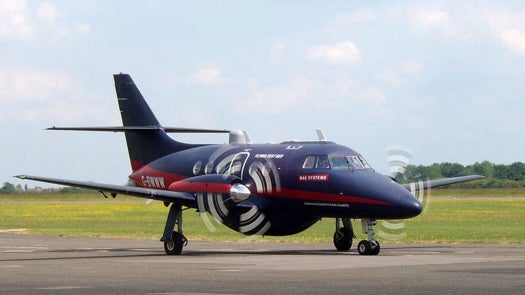Robot Plane Flies Humans 500 Miles
Up, up, and away—without a pilot.

The great thing about robots is that they take boring, repetitive tasks from humans, which frees up our superior minds for more creative endeavors (like building more robots.) Flying a commercial airplane, much like driving down long stretches of undifferentiated Eurasian steppe or piloting a cargo helicopter back and forth over the same route, typically consists of a few moments of human input mixed in with long stretches of automated tedium.
As such, it was only a matter of time before machines took over the cockpit: Last month, a robot plane safely carried passengers 500 miles from England to Scotland and back again, the British consortium operating the plane revealed Monday.
Dubbed “the Flying Test Bed,” the plane is a normal 19-seat Jetstream—the kind a corporate executive might fly in—that was converted to fly autonomously. The group behind the plane is Autonomous Systems Technology Related Airborne Evaluation and Assessment (Astraea), a business consortium funded by the British government and private businesses.
The test flight wasn’t completely autonomous—a human pilot onboard entered the cockpit to steer the plane through take-off, and then later the landing. The majority of the flight, however, that long tedium of maintaining a plane at cruising altitude, was in control of the remote pilot, with autonomous systems doing much of the actual flying.
While this was a test flight, it didn’t interrupt normal air traffic, and it’s 500-mile round-trip between Warton, England, and Inverness, Scotland, occurred in regular commercial airspace, shared with other airplanes.
Next up for the plane? Testing weather avoidance systems over the Irish sea and then using a system based around infrared sensors to test obstacle avoidance on emergency landings. Following that, Astraea is planning to test systems that can communicate with air traffic controllers and sense and avoid other aircraft.
The next big goal for robotics is commercial airplanes that can autonomously take off and land themselves. Earlier this week, the U.S. military showed off a drone nearly at this point, and technology is improving fast.
With each boring task taken over by autonomous machines, the future becomes a little bit more more exciting for us creative humans.
